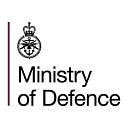Royal Navy destroyer makes her second drug bust
Royal Navy destroyer, HMS Defender has dealt another blow to the funding of terrorism after seizing 2,500kg of ‘hash’ worth £1 million in the Indian Ocean.
This is the warship’s second drugs bust in just a few months, after seizing a record haul of crystal meth in December.
The Portsmouth-based ship has been operating in support of the Combined Task Force 150 — an international team keeping the seas around the Gulf secure.
“Once again Defender has been able to seize a significant amount of narcotics, reinforcing the Royal Navy’s commitment to ensuring maritime security by disrupting the operations of drug smugglers and terrorists.”
The drugs bust unfolded after Defender launched her Wildcat helicopter to begin a search for possible illegal and illegitimate marine traffic in the Indian Ocean.
Before long, a suspicious dhow (a traditional sailing vessel) was identified and HMS Defender sent a boarding team of Royal Marine Commandos, commanded by RM Lieutenant Ben Clink, to investigate.
Once the Royal Marines had secured the dhow, a Royal Navy team followed and searched the vessel for illicit cargo.
The boarding party discovered 2,500kg of hashish (AKA ‘hash’) in 119 bags hidden throughout the dhow. The combined value of the drugs is £1 million.
“This is yet another example of the Royal Navy putting their first-class operational training to use, interrupting drugs traffickers active in the region.”
Defender’s haul of 131kg of crystal meth in December 2019 was the Combined Maritime Forces (CMF) largest ever. It took CMF’s total crystal meth seizures for 2019 to 257kg, compared to only 9kg in 2018.
The UK has a long-standing maritime security presence in the Gulf and the Indian Ocean. Since 1980, ships of both the Royal Navy and Royal Fleet Auxiliary have maintained a presence there 365 days a year.
Currently, the Type 23 frigate HMS Montrose is stationed in the Gulf as part of the Royal Navy’s forward presence. Ensuring peace, stability, and the free flow of trade through some of the world’s most vital shipping lanes.
